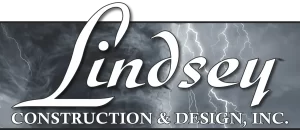When a tree is situated close to your home or on a property line, many questions can arise about appropriate care and responsibility. Is pruning enough to protect my home or should I remove the tree to protect my foundation from the root system? If the branches overhanging my home are from a tree that appears to be on my neighbor’s property, am I responsible for pruning the branches? Who is responsible for a tree that is growing right on the boundary?
When you have questions about proper care for trees on or near your property, your best bet is to contact a tree care professional who can advise you and safely complete any pruning or removal if necessary.
Trees near your home
Trees that are growing near your home are not necessarily a problem. Work with your local tree expert to ensure the tree is healthy, branches are kept back from the roof of your home, and the root system is not encroaching on your foundation.
- Trim branches regularly to prevent them overhanging your roof, which could encourage pest problems or deposit debris that could damage your roof.
- Have dead or dying branches removed immediately.
- Ensure the tree is kept watered and fertilized for maximum health.
- Secure an inspection by an expert to confirm the root system is healthy and not encroaching on your foundation.
Unfortunately, homeowners can make the mistake of planting a young tree too close to their home to accommodate the tree when it reaches maturity. Your local tree expert can advise you on appropriate trees for your property based on their height and span at maturity and their root systems. Trees with root systems that grow down rather than out are best for smaller lots.
A tree near your home that has sustained storm damage, disease, or insect infestation should be removed by a professional as soon as possible. Most professionals also suggest removing trees that are growing into power lines to prevent power outages or surges. Contact your local tree expert to help in this decision.
Trees on or near a property line
Boundary trees – those straddling a property line or alongside a property line – can be a source of confusion and frustration for homeowners, especially when neither neighbor planted the tree. When it comes to responsibility for care or damage, ownership is critical. Consider the following:
- Ownership is determined by where the tree is growing, not by where the branches extend or by who planted it. If the trunk straddles the property line, responsibility is shared by the property owners. If you are considering planting a tree near a property line, consult a survey to ensure exactly where the property line is.
- Damage to sidewalks, driveways, curbs, or fences that is caused by the roots of a tree is the responsibility of the tree owner. Your city officials may require you to remove at your expense a tree that is causing such damage.
- You may prune branches from a neighbor’s tree that are overhanging your property, but only up to the property line, and you may want to consult your local tree expert for proper pruning techniques. Improper pruning that damages that tree may be your responsibility.
- Generally, if your otherwise healthy tree causes damage to your neighbor’s property (a limb falls on the neighbor’s fence during a storm, for example) you are not liable for the damage. Attend to trees that need dead-wooding or removal, however, as damage caused by an unhealthy tree that you failed to care for or remove is likely your responsibility.
Tree pruning, feeding, or removal is best handled by a tree expert. If you have questions about trees on your property, near a property line, or growing alongside your home or other building on your property, contact Linger’s Lumberjacks for expert advise and care. Click here for more information about all of Linger’s tree services, including everything from trimming and cabling to removal, stump grinding, and crane services.
